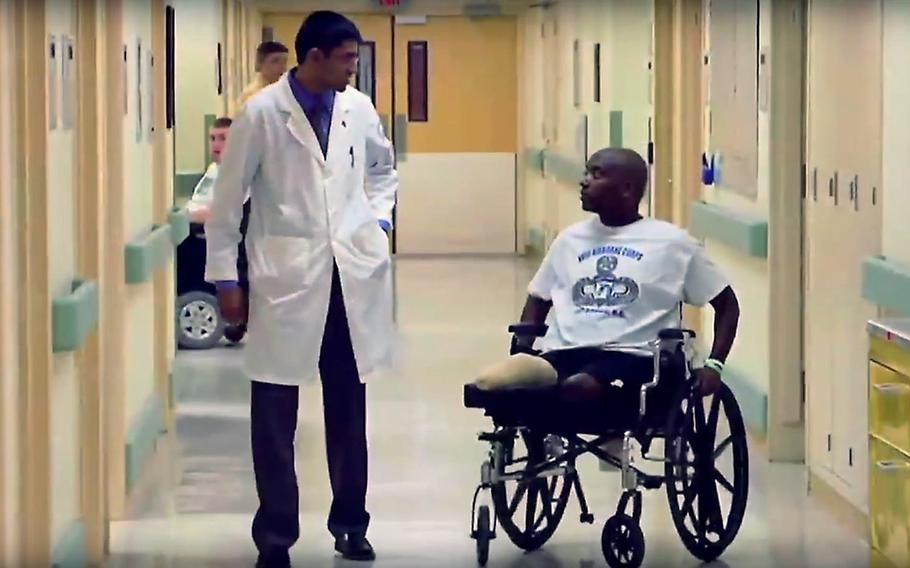
A video screen grab shows a scene from a U.S. Department of Veterans Affairs promotional. On Wednesday, Sept. 28, 2016, VA officials testified on Capitol Hill about the feasibility of leasing facilities. (Veterans Affairs)
WASHINGTON — The Department of Veterans Affairs has been leasing medical facilities in recent years, rather than building its own, in order to stay flexible with changing health care needs. But the VA has failed to prove why leasing is worth the extra cost, said Rebecca Shea, an official with the U.S. Government Accountability Office, on Wednesday.
“Without transparency on the actual benefits VA has experienced from leasing its major medical facilities, VA and congressional decision-makers may lack information to make informed decisions,” she said.
Shea and James Sullivan, with the VA’s Office of Asset Management, faced questions Wednesday from members of the House Transportation Committee, which is responsible for approving government leases totaling more than $2.85 million. The hearing was held about a week ahead of the VA’s plan to submit eight more lease requests to the committee.
Shifting to leases House Veterans’ Affairs Committee member Rep. Ryan Costello, R-Penn., sat in on Wednesday’s hearing. Costello said leasing medical facilities was a “prudent course,” and noted that the House Committee on Veterans’ Affairs had seen multiple recent examples of over-budget VA construction projects.
However, Costello said he wanted a “cleaner analysis” on the benefits and cost differences of leasing a facility versus building one. According to Shea’s prepared testimony, the VA last year proposed leasing a facility in Lafayette, La., that would cost about $259 million for the building over its lifetime. If the VA constructed and owned a facility in Lafayette, it would cost $201 million, the VA estimated.
In justifying the decision, VA officials said it could open a facility faster with a leased building, and it would allow the VA to move facilities with shifts in the veteran population.
“We believe leasing provides a more expeditious way to get health care to veterans,” Sullivan said.
He also said the VA has too many “old and obsolete” buildings in its portfolio, which leasing would help to avoid. Earlier this year, the VA reported that 370 of its buildings were vacant.
The VA owns 6,300 buildings across the United States, Sullivan said. The department leases 1,968 buildings, which grew from 689 leases in 2005, according to information from Government Accountability Office.
Congressional delays As the VA prepares to submit eight new lease requests, Sullivan noted that there have been delays at the congressional level in approving leases.
In his prepared testimony, Sullivan said 24 proposed leases in 15 states are pending before Congress. Some of those leases were submitted as long as three years ago, he said.
“Without authorization from Congress, VA cannot begin work to secure needed leased space to meet the needs of veterans seeking VA health care,” his testimony said. “Failure to receive authorization will have a growing and worsening effect on veteran access to care nationwide.”
Many of the VA’s current 10- to 15-year leases are coming to an end, Sullivan said. If Congress does not approve new leases, some facilities may be forced to close and new ones may not open right away.
Sullivan likened it to a “large cloud coming at us.”
Rep. Julia Brownley, D-Calif., introduced legislation last year to streamline the process that Congress uses to authorize VA leases. The Build a Better VA Act was introduced in the House, but no action was taken on it.
Brownley, a member of the House Veterans’ Affairs Committee, was at Wednesday’s hearing.
Sullivan said the VA supported her bill.
“This is not only frustrating to me as a member of Congress, but it is having a very negative impact on veterans who are underserved,” Brownley said. “These are 24 communities where veterans truly need better access to health care.”
wentling.nikki@stripes.com Twitter: @nikkiwentling